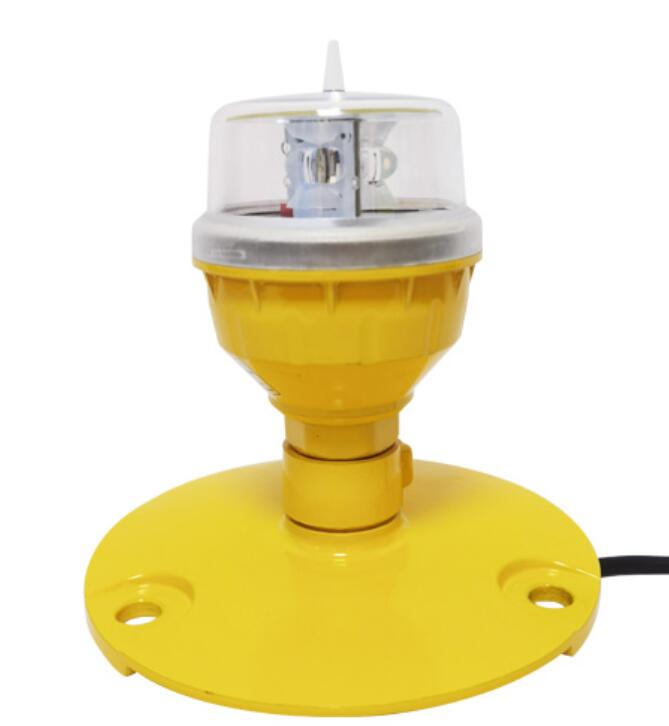Perimeter Lights: The Unsung Heroes of Aviation and Infrastructure Safety
While often overlooked, perimeter lights form the critical first line of defense in aviation safety and site security. These specialized lighting systems create visible boundaries for airports, helipads, and sensitive facilities, operating silently 24/7 to prevent accidents and unauthorized access. This comprehensive guide examines the technology, applications, and evolving standards that make perimeter lighting indispensable in modern infrastructure.
The Vital Functions of Perimeter Lighting Systems
Perimeter lighting serves three essential purposes:
Runway Definition - Clearly marks airport boundaries for approaching aircraft
Hazard Delineation - Identifies obstacles and drop-offs
Security Enhancement - Detects and deters unauthorized perimeter breaches
Cutting-Edge Perimeter Light Technology
1. Advanced LED Systems
90% more efficient than traditional incandescent options

100,000-hour lifespan with minimal maintenance
Instant full-intensity illumination
2. Smart Control Features
Automatic brightness adjustment
Remote monitoring capabilities
Self-diagnosing systems with fault alerts
| perimeter lights |
3. Sustainable Solutions
Solar-powered standalone units
Energy storage innovations
Low-voltage operation
Industry-Specific Applications
1. Commercial Airports
Runway edge lighting systems
Taxiway boundary markers
Apron safety perimeters
| perimeter light |
2. Military Installations
Secure facility demarcation
Helicopter landing zone definition
Obstruction warning systems
3. Industrial Facilities
Hazard area identification
Storage tank perimeters
Crane operation boundaries
4. Urban Infrastructure
Hospital helipad lighting
Construction site safety
Bridge edge warning systems
Regulatory Compliance Standards
Perimeter lighting must meet strict requirements:
FAA AC 150/5345-46 (Airport lighting)
ICAO Annex 14 (International standards)
IEC 60598 (Safety specifications)
IP68 (Environmental protection)
Key compliance factors include:
Light intensity and distribution
Color consistency
Physical durability
Electrical safety
Installation Best Practices
Proper implementation requires:
Strategic Placement
Consistent spacing (typically 50-200 feet)
Proper elevation angles
Unobstructed visibility
Electrical Considerations
Surge protection
Circuit redundancy
Ground fault protection
Environmental Adaptation
Corrosion-resistant materials
UV-stable lenses
Temperature-tolerant components
Maintenance Protocols
To ensure continuous operation:
Daily: Visual inspection of all units
Weekly: Cleaning of lenses and housings
Monthly: Electrical system testing
Annual: Complete system evaluation
Emerging Innovations
The future of perimeter lighting includes:
Motion-Activated Zones
Integrated Surveillance Systems
Predictive Maintenance AI
Self-Healing Materials
Selection Criteria
Key evaluation factors:
Regulatory Compliance (Proper certifications)
Durability (Environmental resistance)
Visibility (Day/night performance)
Energy Efficiency (Operating costs)
System Integration (Control compatibility)
Perimeter lights represent a critical intersection of safety, security, and operational efficiency in aviation and infrastructure management. As technology advances, these systems are evolving from simple markers to intelligent components of integrated safety networks. Modern solutions now offer unprecedented reliability and smart features that extend far beyond basic regulatory requirements.
For airport operators, facility managers, and safety professionals, investing in quality perimeter lighting isn't just about compliance—it's about creating a visible, reliable safety infrastructure that protects both people and assets. The next generation of perimeter lighting systems will likely incorporate even more advanced technologies, potentially integrating with IoT networks and autonomous monitoring systems. By understanding current capabilities and future trends, decision-makers can implement perimeter lighting solutions that meet today's needs while preparing for tomorrow's challenges.
